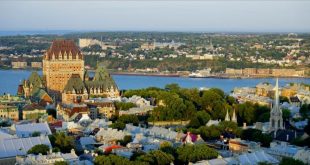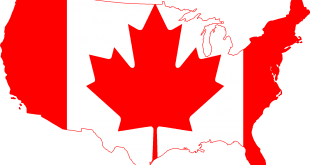If you’re considering the idea of studying in Canada, you may as well inquire about the country’s education system, at tertiary level. It may be helpful to learn about the structure, types of institutions, degrees and program choices and find out how actually the Canadian higher education system works for international students. This guide aims to cover these few points; giving you an overview of what it is like to study at universities in this amazing country.
Table of Contents
Facts and Figures: Why is Canada’s Education System so Good?
The education system in Canada is diversified, and comprehensive, and shares some common grounds with the US and British systems. With 13 provinces, education in the country falls under each province and territory’s jurisdiction. Therefore, differences in the systems lay on the matter of legislation, policies and programs, taking into account factors such as history, language, culture, geography as well as population needs.
Moreover, the high standard and quality of the Canadian higher education system is well established. It’s further reflected in latest figures such as the country’s 7 universities positioned among the top 200 in global rankings. Furthermore, Canada stands among the best performing countries in reading literacy, math and sciences in the OECD. The country also boasts the 4th position and 2nd position respectively for English and French language studies in the world.
Beyond graduation from higher education and vocational training institutions, Canada has remained in the last decades in the top 10 Global Employability Rankings by international employers. In other words, a Canadian qualification is of very prestigious value in the international job market, stating further on the quality of the education system in the country.
How Does the Canadian University System Work?
Basic structures of education systems in all Canadian territories and provinces are similar. At the post-secondary level, there are public and private institutions offering different ranges of educational programs and degrees. Most institutions also receive operating funding from both the government and student tuition. The proportion for each funding varies depending on the province, institution and program.
Moreover, most higher education institutions in Canada are autonomous when it comes to admission requirements and program curriculum. They fall under the regulation of ministries/departments of post-education, mainly on matters regarding fee structure and accountability. There is also the Council of Ministers of Education, Canada (CMEC) which is responsible for everything policy concerns and joint provincial/territorial projects between education ministers or departments in all 13 provinces.
When it comes to choosing a program, some Canadian universities apply the major/minor system. This means, students when applying, choose a main study subject, a major, which will be the main focus of their classes. Alongside the major, they take another subject, a minor. They can do so, usually in the first or second year of study. But there’s also the possibility to take two majors/dual degrees, which is a balanced combination of subjects, both useful for the student’s career goals.
Lastly, several universities in Canada offer students the option to customize their degree to their interests. This is done through international experience at partner universities, work placements, co-op or internships, to name just a few.
Types of Higher Education Institutions in Canada
Following high school, students have the choice between colleges and universities. Colleges in Canada are institutions where students earn a certificate, a postgraduate diploma or an associate degree. This includes community colleges providing certificates and undergraduate degrees and technical schools/career colleges that are privately owned.
There are also university colleges, which offer courses leading to a direct entry at an associated university. Lastly, universities are places where students earn all levels of degree: undergraduate, graduate and postgraduate. Universities are funded by the local provincial government.
You can also take English or French lessons when visiting or working in Canada in preparation to enter a university or a college, at several language schools. The last option is online and distance education, offering students to learn from home while getting the full benefit of the high-quality Canadian education system.
What is the Difference Between a College Degree and a University Degree in Canada?
In Canada, colleges and vocational schools are more for those looking to pursue more practical learning. After graduation, students receive a certificate-type or an associate degree. For more academic studies, leading to degrees from undergraduate to postgraduate levels, universities are the way to go. The other difference between a college and a university degree has to do with the tuition cost: university courses tend to be higher than professional degree courses.
Types of Degrees: How Many Years Does It Take To Get a Degree in Canada?
To earn a certificate or a diploma from a community college or technical college in Canada, studies last between 1 and 2 years. An associate degree, on the other hand, requires 2 years full-time studies. Following these undergraduate qualifications, a postgraduate diploma from community colleges and universities, can be earned after 2 years of study.
At university settings, undergraduate degrees consist of a bachelor’s degree, which usually takes 3 to 5 years to complete. It can be a BA (Bachelor of Arts), B.Sc. (Bachelor of Science), a BES (Bachelor of Environmental Studies) to name a few. Additionally, professional degrees such as MBBS (medicine) require additional years of study.
Following these bachelor’s degrees, students can further earn a master’s degree after 1 or 2 years of studies. This can be a MA (Master of Arts), MSc. (Master of Science) or a MBA (Master of Business Administration).
The last type and higher level of degree is a PhD or doctorate degree, which needs between 4 and 7 years post-master’s to complete. Only universities provide this level of qualification.
Top Universities in Canada
You can check out our ranking of the best universities as well as the top affordable universities in Canada for international students. As for the categories of universities in the country, there are three of them: research universities, primarily undergraduate universities and comprehensive universities.
- Research universities as their name states have more to do in building their reputation upon their research output. They usually offer undergraduate, graduate and postgraduate degrees in various fields. Among the top research universities in Canada, there is the University of Toronto, Alberta or British Columbia.
- Primarily undergraduate universities, on the other hand, focus more on undergraduate degree programs and don’t offer many graduate and postgraduate degrees. Their other particularity resides in the smaller class sizes, allowing more interaction between students and teachers. This is the case at University of Northern British Columbia, Acadia University or Mount Allison University.
- Lastly, comprehensive institutions offer not only academic degrees but also professional programs. Students are provided with a well-rounded university education, as well as the opportunity to pursue research and contribute to innovation. That’s the case at the University of York, Simon Fraser University or Victoria University.
What is Canada’s Education Grading System
The Canadian grading system is different from other countries, and 10 of the 13 provinces all have their own systems. Just like British Columbia and Quebec that don’t have the D grade, making the “C” score as the minimum passing grade. Moreover, like in the U.S. each letter is associated with a GPA score. Generally, a 4.0 GPA counts for an A grade, the highest – and a 0.0 GPA is worth an F, the lowest grade.
To calculate the GPA, the formula is to multiply the total grade points earned by the credit hours for each subject course.
Canadian University Credit System
Each university or college department and faculty in Canada determine the credit hours students need to complete their courses. This credit system allows students from Canadian institutions to get easily transferred to another program or university. And the other way around, this helps to easily evaluate the level of students from other countries to get admission at a Canadian university.
Students can check the course outline to find the details regarding these credits. But usually, bachelor’s degrees account for 15 credit hours, while master’s degrees are assigned up to 24 credit hours. Moreover, the grading system enables students to eventually make up for poor marks during summer break.
Higher Education System in Canada: Top Courses
Among the top choices of international students when applying to study in Canada, there are:
- Computer science and IT with the increasing demand for tech professionals
- Medicine and health science: including courses in human medicine, nursing, healthcare management, medical research to name a few
- Business administration with MBA, marketing, entrepreneurship or finance programs being in high demand
- Engineering: including civil, chemical, environmental, mechanical engineering programs
- Hospitality management and tourism
- Environmental science and sustainability
- Education and teaching
- Agriculture and agribusiness
- Humanities and social sciences
- Fine arts, graphic design, film production, and digital media-related courses
Canadian Higher Education System vs. Quebec
It won’t be fair talking about Canadian higher education without mentioning the particularity of the Quebec system. Generally, Quebec has a unique system with CEGEPS (Collège d’enseignement Général et Professionnel) which offer either a 3-year professional program or a 2-year university preparation program. The latter qualifies students to pursue bachelor’s degree programs at universities and other institutions. Students from CEGEPS actually don’t need to attend the “high school” part anymore but follow instead a pathway comprising elementary, secondary then CEGEPS path.
Another point that differentiates Quebec from other provinces in Canada has to do with terminology, mainly for the word “college”. Unlike in Quebec, the term “college” is used in the rest of Canada for a vocational training school or a community college. Colleges are these institutions offering mainly undergraduate degree programs. The last point that distinguishes Quebec from the rest of Canada is the structure of graduate education. To put it simply, in Quebec, the postgraduate level encompasses the master’s degree along with the PhD degree.
Canadian Higher Education System: the Academic Culture
Most courses in Canadian universities consist of lectures, lab sessions, studio classes, and discussion groups. In some cases, there are even opportunities to practice a new language. Students are generally entitled to around 5 courses per semester, each course including lectures, tutorial and discussion groups. The amount of class time varies depending on the program, which may include less lecture and more research and lab work, for example.
Usually, classes take place in the daytime. However, some may take place in the evenings, like from 6:30 to 9:30 PM or from 7 to 10 PM. Moreover, semesters in Canada include three intakes: one in September, one in January and one in May. The September intake is the most widespread, as most universities in Canada organize their programs around a September start.
When it comes to teachers and students interactions, students can ask questions during lectures. But professors also have office hours, during which they make themselves available to answer students questions. The last thing you should expect to get when studying in Canada is to learn alongside a multicultural student body with professors who come from around the world.
Application Requirements and Process: How Do I Apply for University Studies in Canada?
We already have a comprehensive guide on the application process for higher education in Canada. So, to summarize everything, here are some key points to keep in mind:
- Requirements to study in Canada vary depending on the university, the degree level as well as the province where the institution is located
- Most common documentation to provide include transcripts of previous school records as well as an evidence of proficiency in the program’s language of instruction
- Some universities require students to provide a personal essay, a portfolio of creative work or any math or science contests they have had taken part in
- Students usually submit their application either through an online platform or by mail to the institution’s admission office
- Unlike in the U.S. where you can decide on your major after you enroll, in the Canadian education system, you directly choose a specific program when you apply.
- When applying for a graduate degree at a research institution, students must prove they have the theoretical knowledge to conduct independent research. For that, they need a supervisor having interest in the similar field they plan to do research.
How Much Does it Cost to Study in Canada for International Students?
Tuition fees in Canadian higher education institutions depend on the types of school and programs.
At public universities, international students should expect to spend between CAD 7,000 and CAD 30,000 per year. Colleges, on the other hand, charge between CAD 5,000 and CAD 15,000 per year. Professional programs’ cost range between CAD 6,000 and CAS 20,000 per year. And last, private institutions apply much higher fees, depending on the courses the student applies for.
To afford higher education in Canada, students can enroll at cheaper universities. There are also various scholarships for quality candidates from universities, government organizations and private companies. These scholarships can cover full or partial tuition, along with subsidies to cover living costs. Other financial aids include grants such as the Canadian Emergency Student Benefit (CESB).
Read here our guide on the scholarships in Canada.
Additionally, students can apply for loans to cover their tuition fees and other expenses. However, some international students may not be able to take this step. Finally, to reduce their expenses and cover certain living costs, students can also take on part-time work during their studies.
This post is also available in fr_FR.




 Aljawaz Your guide to study abroad
Aljawaz Your guide to study abroad
























